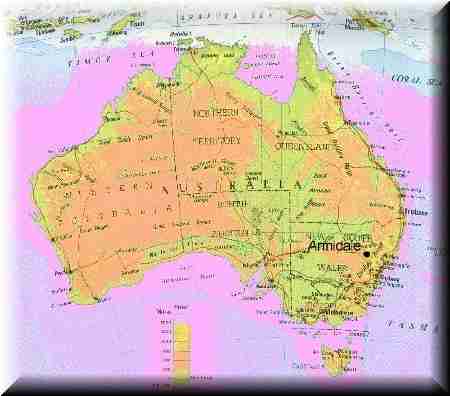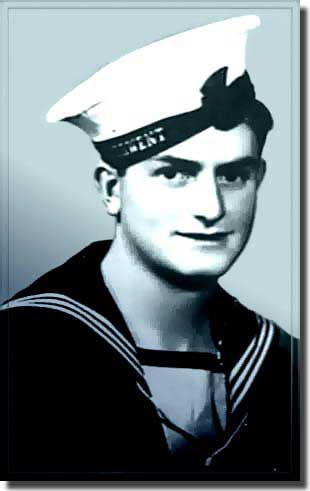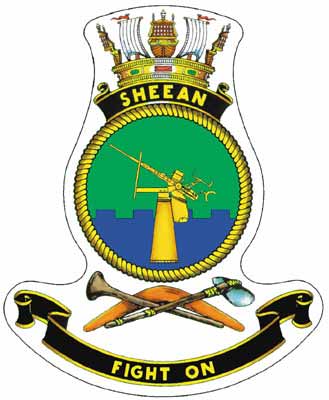|
The Death of HMAS Armidale
These little ships became known as Corvettes, they were named after country towns scattered around Australia, and, many of our wartime sailors were drawn from these country environments. Like the men who manned them, the Corvettes were honest, hard working, dependable, but, from time to time were liable to “act up” especially in any kind of rough weather. They were used for anti-submarine, escort, and mine sweeping duties in the Mediterranean, Persian Gulf, Indian Ocean, South West Pacific, and also in home waters. Armidale was laid down on the 1st. of September 1941, at Mort’s Dock, she commissioned on the 11th. of June, the following year, but, before her first Christmas in service, she was gone, sunk off Timor. Timor had been colonised by the Portuguese 400 years ago, it is located only 580 kilometers from Australia’s northern coastline- the western half of the colony had become part of the Dutch East Indies, whilst Portugal still held the eastern sector of Timor. Only a small army garrison was in position there, and in September 1941, Australia became concerned about the possibility of a Japanese occupation there, so close to us. After Pearl Harbor, Australian troops were despatched to Dutch Timor, and the 2/2nd. Independent Company were to bolster the Portuguese presence to the east, if Japan moved on that territory. This force of 273 officers and men under Major A Spence with Captain B J Callinan as his deputy had trained to operate behind enemy lines as Commandos. This word had been spawned by the Boers, who had pioneered this method of warfare against the British during the Boer War. On December 16th. 1941, in concert with Dutch troops, members of the 2/2nd. Independent Company embarked for Dili. The Portuguese Governor was warned of an impending Japanese invasion, and told that Dutch and Australian troops would land to protect his colony, but he refused this offer of assistance, but on the 17th. the combined Dutch/Australian force landed anyway, 6 Kilometers west of Dili. The Japanese landed in force on the 20th. of February 1942 at both Koepang in Dutch Timor, and at Dili in Portuguese Timor. By the 24th. the Australian Koepang force had surrendered, but in the east, the Australian Independent Company vanished into the hills to harass the Japanese invasion force, gradually the 2/2nd. Company became worn out , and by June it was decided they needed to be pulled out, and replaced with a fresh Independent Company. The Naval Officer in charge at Darwin was Commodore Cuthbert J Pope, he happened to be in charge of Flinders Naval Depot when I joined the Royal Australian Naval College in January of 1936. Pope was a naval officer from the old school . By a further coincidence, the 6 J Class submarines given by the Royal Navy to the Royal Australian Navy, were in April 1919, escorted from UK to Australia by the Sydney, and Pope who had been the navigating officer in her when she sank the Emden in 1914, was still serving in her. At the close of the first World War, my father, having served in France in the 2nd. Dragoon Guards, Queen’s Bays, joined the RAN in London. He took passage to Australia in J2, one of these old J boats. At this stage, Armidale was one of the Corvettes under the command of NOIC Darwin. To use a Corvette to transport the relief army group plus their stores and ammunition, would of necessity, be a slow and painful trip, much of it having to be made in daylight placing the ship’s destiny into the hands of Japanese bombers. Pope asked the Naval Board to loan him a bigger and faster ship, and the old V and W destroyer Voyager was earmarked for this job. On September 22nd. the 2/4th. Independent Company with their stores, joined Voyager, and she sailed for Betano Bay, on arrival, the ship anchored about 450 metres from the beach, with a further 730 metres to the reef. Lieutenant Commander Robison, Voyager’s Captain, was not happy with this anchorage, he weighed anchor to move, but, just as the anchor broke free, a strong current pushed his ship sideways towards the shore. Barges full of soldiers were milling around the port propellor area, and he could not use that screw without upsetting the barges, and probably chopping up some of the soldiers. By use of the starboard engine alone he cleared the area, and then went ahead on both engines, only to run aground at 1851 (6. 51 P.M.) Voyager would not budge, the south east breeze freshened, pushing the destroyer further onto the beach. She was firmly aground in Timor to stay! With the loss of Voyager, the 2/2nd. group of Australian soldiers were still stranded in Timor. It was decided to evacuate them and some 120 Portuguese women also in jeopardy on the island, a further 176 Dutch native troops were thought to be at risk from the Japanese invasion, any one found assisting the old Colonial power were soon liquidated. The Corvettes Castlemaine, Armidale together with HMAS Kuru, a 55 ton former Northern Territory patrol boat which had been requisitioned as a Naval tender in Darwin in 1941, were all earmarked to carry out this rescue mission, and it was expected that two round trips would have to be made to lift all these personnel. En route to Timor the two Corvettes were sighted by Japanese aircraft and bombed. It was expected to meet up with Kuru at Betano Bay where she would ferry out the evacuees to the waiting Corvettes, on arrival, no sign of either the evacuation group or of Kuru. There was no point in the Corvettes waiting around, inviting the Japanese aircraft to attack them, so they decided to return to Darwin, enroute they came across Kuru, crammed with 70 women and children. These were all transferred to Castlemaine, who set course for Darwin. Meantime, Kuru was already on her way back to Timor, to be closely followed by Armidale. Five Japanese bombers now attacked Armidale, but were fought off, and all the bombs fortunately fell wide of their mark, but ten hours of daylight were still to be faced, and essential air cover for Armidale was missing. It was the afternoon of November 30th. 1942. At 1430 (2.30 P.M.) Lieutenant Commander Richards, the Commanding Officer of Armidale, signalled Darwin “enemy aircraft bombing, no fighters arrived.” At 1458 (2.58 P.M.) he again sent a signal, “ nine bombers, four fighters, absolutely no fighter support.” This was the last signal to emanate from this little ship. Japanese aerial torpedoes were unleashed, and one struck home into the port side at 1510 ( 3.15 P.M.) this was quickly followed by a second torpedo breaking Armidale’s back. She was listing sharply to port, and her Captain ordered “abandon ship!” The Japanese air crews now attacked survivors in the water. Ordinary Seaman Teddy Sheean hailed from Latrobe in Tasmania, he was still 18, his next birthday about a month away. On seeing his shipmates being cut to pieces by the Japanese, he scrambled back to the 20 MM oerlikon mounting fitted just aft of the bridge. He strapped himself in, and must have known he was about to sacrifice himself in an attempt to save some of his fellow sailors. The Armidale was already on her way to the ocean floor, she, in fact, sank only three minutes after being struck by the first torpedo. Sheean shot down one Japanese aircraft, and was hit by the gunfire from an attacking Zero, but he maintained his fire, even though water was lapping round his feet his gun kept up its attack against the enemy. Finally, water closed over Sheean and his gun as Armidale sank beneath him, his heroism and ordeal at last over. No Victoria Cross had ever been awarded to an Australian sailor, if at last the Royal Australian Navy was to be awarded its first VC, then Ordinary Seaman Edward Sheean would surely be its recipient. But no! it did not happen.
Now, more than fifty years on, in a belated attempt to honour him, one of the RAN’s Collins Class Submarines will be christened Sheean, after this young hero, who gave his life so willingly in trying to save the lives of others. This is the first time an Australian warship has been named after a Naval Rating. Armidale lost two Officers and thirty eight Ratings, whilst two Officers, and fifty eight Men from the Dutch East Indies forces, also perished. The gallant Armidale and Teddy Sheean will long remain a part of history in the annals of the Royal Australian Navy.  |


